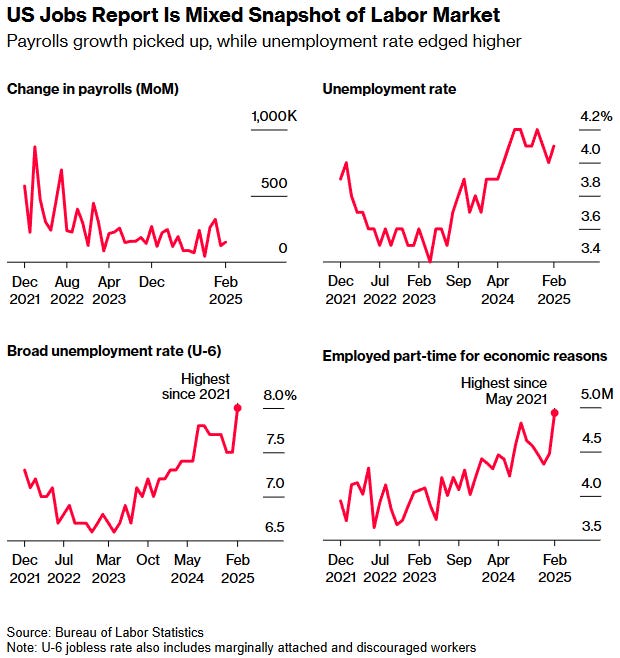
The U.S. labor market added 151,000 jobs in February, falling short of economists’ expectations of 160,000. This marks a slowdown in job growth compared to previous months, sparking discussions on the state of economic recovery and workforce dynamics.
Unemployment Rate Rises
The unemployment rate ticked up to 4.1%, a slight increase from January’s 4%. While the increase remains modest, it reflects a trend that could impact consumer confidence and spending. Compared to the first two months of the previous year, this marks a 19% decline in employment growth.

Sectoral Trends: Federal Job Cuts and Wage Growth
One of the notable shifts in February was the decline in federal government employment, which saw a reduction of 10,000 jobs. This decline comes amid budgetary adjustments and restructuring within various federal agencies. In contrast, the private sector continued to expand, although at a slower pace than earlier in the recovery period.
Despite the slowdown in job growth, average hourly earnings increased by 0.3% from January, contributing to a 4% rise on a year-over-year basis. Wage growth remains a critical indicator of economic stability, reflecting the balance between inflationary pressures and consumer purchasing power.
Declining Labor Force Participation
The labor force participation rate showed a concerning trend, with 546,000 individuals exiting the job market in February. This decline suggests a growing number of people are either retiring, facing barriers to re-entering the workforce, or opting out due to shifting economic conditions. A shrinking labor force can tighten the job market, potentially influencing future wage growth and hiring patterns.
Federal Reserve’s Outlook
Federal Reserve Chair Jerome Powell commented on the report, stating that the economy is “in a good place,” despite the mixed signals from job data. The Fed continues to monitor employment trends, wage growth, and inflationary pressures to determine future monetary policy adjustments. While the labor market remains resilient, policymakers may need to assess whether slowing job growth is a temporary fluctuation or a sign of broader economic cooling.
Conclusion
The February jobs report presents a nuanced picture of the U.S. economy. While job growth persists, the pace has slowed, and rising unemployment signals potential challenges ahead. The Federal Reserve and policymakers will likely continue to navigate these shifts carefully, balancing economic growth with inflation concerns. The coming months will be crucial in determining whether this slowdown is a temporary adjustment or part of a longer-term labor market trend.



